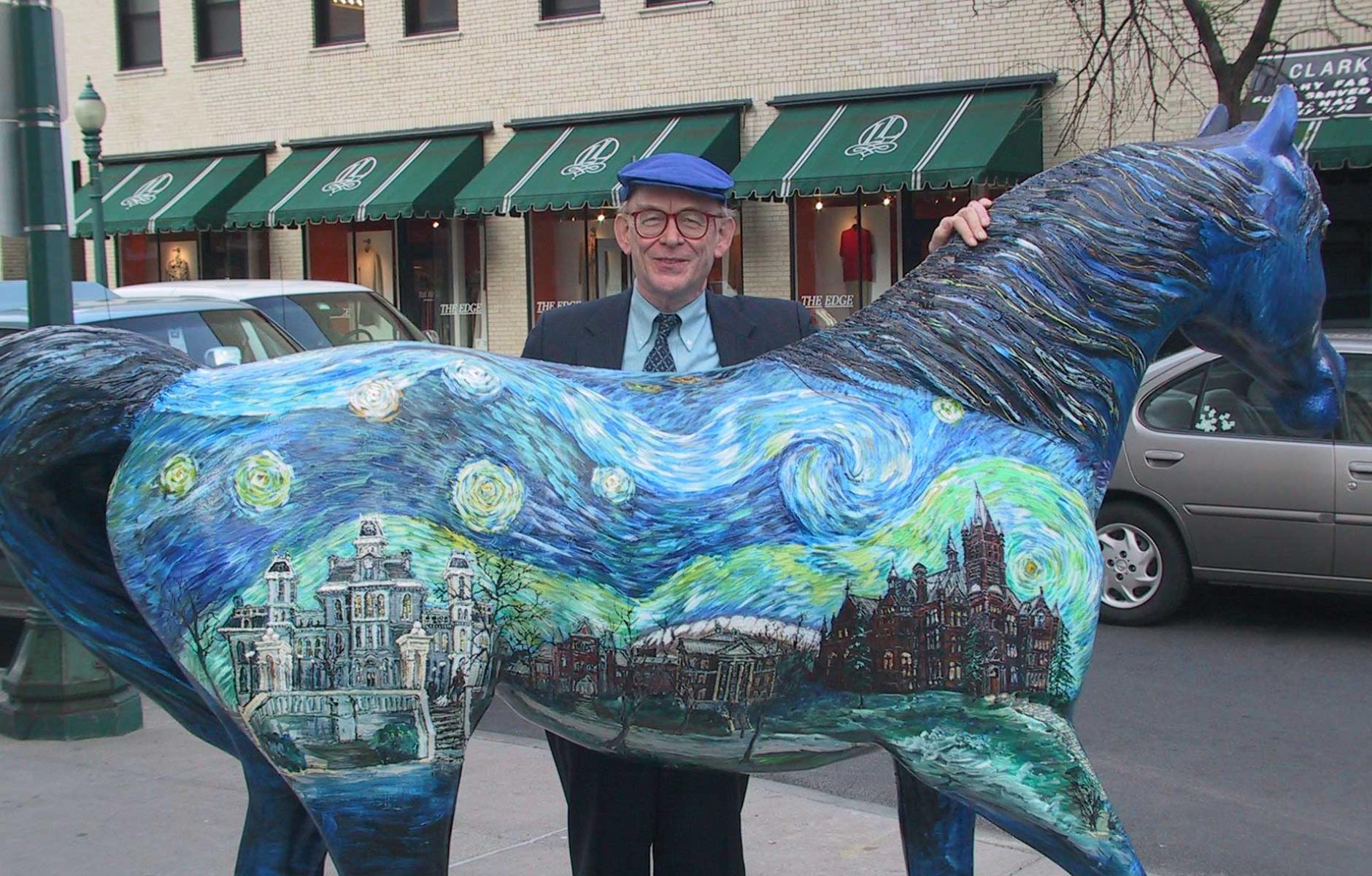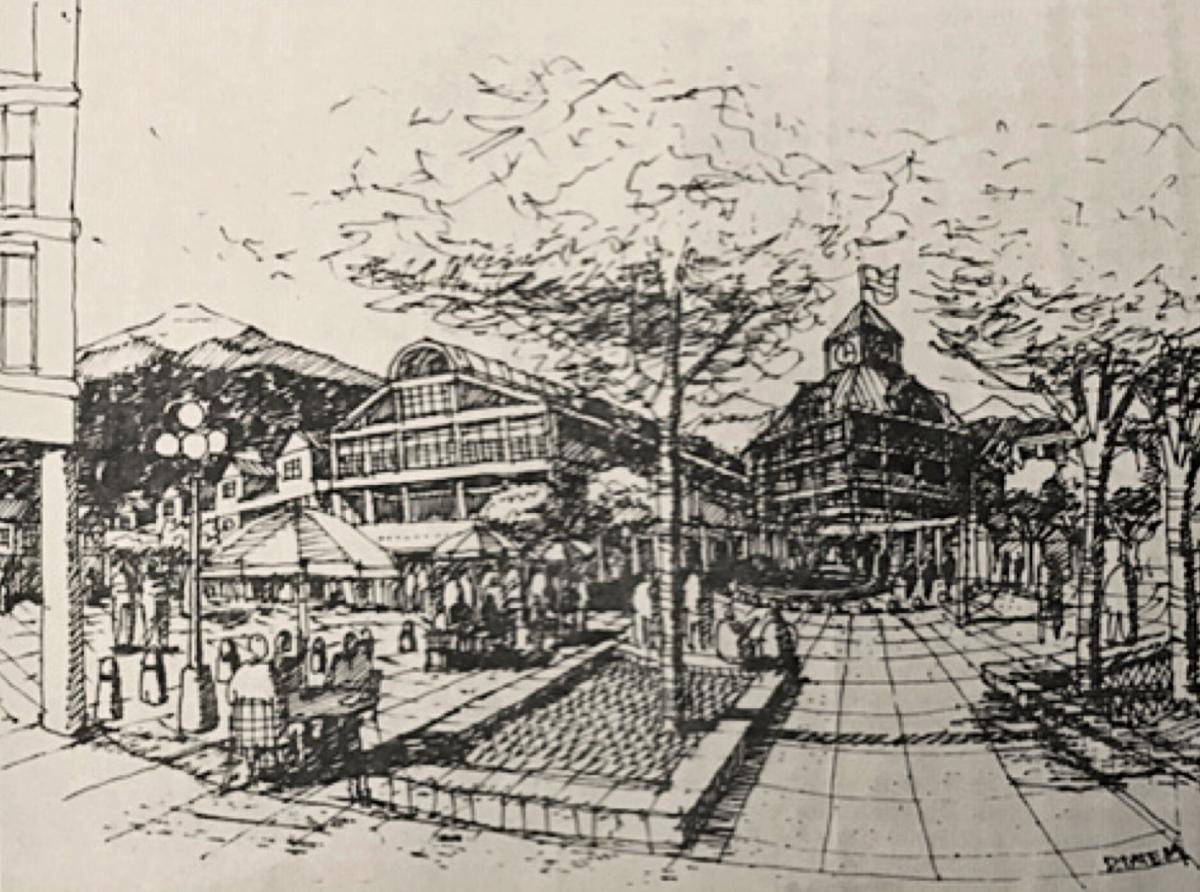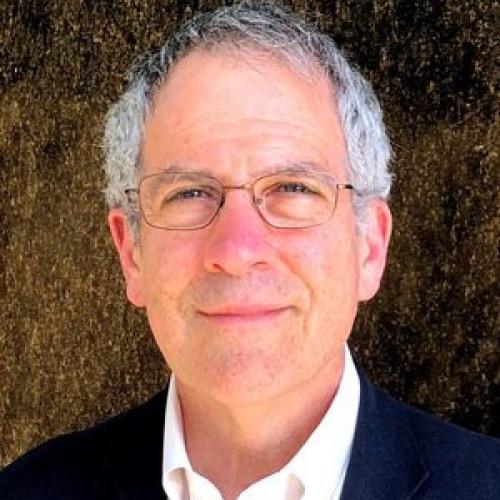
Neal Peirce, chronicler of cities and regions
Neal Peirce, the person who first put me on the path to New Urbanism, died several weeks ago, just days before his 88th birthday. Neal had an outsized impact on my life and that of many other friends and colleagues.
In 1987, I received a small envelope in the mail from my mother. Inside was a folded copy of a supplement from The Seattle Times called the “Peirce Report.” The report, about the future of the Seattle region, was written by Curtis Johnson and Neal Peirce, two people that I hadn’t yet heard of, or met.
I no longer lived in Seattle but was well familiar with the region, having spent most of my childhood there. As a teenager, I was a competitive cyclist, sometimes covering as many as 250 miles in a week, pedaling my way around nearby towns, cities and rural areas that, during those years, were steadily giving way to suburban sprawl: fast-food joints, cookie-cutter housing subdivisions and roads that were much too wide and fast for safe cycling (or even walking).
Section Seven, near the end of the Peirce Report, was the part that I remember best; It looked at physical growth patterns and was very specific in its recommendations. The headline read: “A way to wed conservation to development: The best of both worlds: compact villages surrounded by space, beauty.” The statement was clear and logical, yet startling to my eyes in 1987.
Today, of course, New Urbanists take such concepts for granted. We’ve been talking about, and illustrating examples of compact development for decades. But to me, having grown up in the suburbs of Seattle and still equating quality of life primarily with access to the great outdoors, the report was a breakthrough.
It was also the first mainstream press mention of any member of the group that would later come to be known as the New Urbanists. It called out Doug Kelbaugh, then the chair of the University of Washington’s architecture department, as one among “a group of leading American architectural experts” that was advancing the idea of “pedestrian pockets.” We know from the 1996 publication of the same name that several other well-known architects and urbanists—Peter Calthorpe, Dan Solomon and Harrison Fraker, among them—contributed at various points to fleshing out the concept that Peirce and Johnson identified.
Here’s an excerpt from the Peirce Report’s description of pedestrian pockets:
Ideally, the “pockets,” with up to a few thousand residents, would be connected by light rail. There would be a cross section of residents, by income, age, and ethnic/racial background, including many of today’s single-person or single-parent households. The goal is an old-fashioned village of all kinds of people, not just look-alike families.
The goal as Kelbaugh sees it: “a new compelling suburban typology—one that takes the low-density, homogenous net that has been thrown over the outskirts of our cities and gathers it into finite knots of culture and commerce that are bounded, contained, lively, and pedestrian.”
We think that that’s a pretty exciting vision, and that Washingtonians should be proud someone at their own state university is a leading inventor and proponent of it. In a way it’s utopian. But it comes close enough to the reality of the present-day American family, to the reality of 1980s-style back-office employment, and to so many people’s yearning for old-style villages, it deserves serious experimentation…
Although crude, the aerial pen sketches in black and white illustrating the concept across a two-page spread of newsprint, along with Neal’s words, excited me. The only eye-level perspective (below), however, was disappointing: It didn’t show a single street, and the hardscape plaza it did depict was indistinguishable from the many suburban “pod” shopping centers and/or college campuses that were constructed across the Seattle region in those years.

Earlier in the same report, the term “Smart Growth” appeared as a heading. I’m reminded that the same term was employed years later as the name of a state campaign in Massachusetts for more sustainable community development, and after that by the US Environmental Protection Agency for the same purpose.
Although I took no direct action as a result of reading the Peirce report, I saved it in my files, pulling it out from time to time to make copies to send to friends and colleagues with an interest in city planning. The notion of pedestrian pockets had struck a chord with me, but I wasn’t sure why.
Years later, after I learned about the work of practitioners Duany and Plater-Zyberk (DPZ) in Florida, Peter Calthorpe in California and several others, I decided to write a book about their innovative approach to planning. The New Urbanism: Toward an Architecture of Community (1993) was the result of that effort. As the book was nearing completion, I was asked by my publisher McGraw-Hill, to furnish a list of reviewers.
Meeting Neal Peirce
Although I had still had not yet met him, Neal Peirce’s name was at the top of my list. When we did connect by phone in early 1994, I learned that Neal had just read my book and, by his account, enjoyed it. Better still, Neal told me that he planned to reference New Urbanism, and my book by name, in his upcoming keynote address to the American Planning Association. When I learned that the APA conference would be in San Francisco, just down the hill from where I was living at the time, I extended an invitation to Neal for lunch.
That lunch, in April of 1994, was our first actual meeting. Neal signed my copy of his Citistates book; I signed his copy of The New Urbanism, and Neal invited me to preview his remarks to the APA. I eventually sat in on his speech, and later had the chance to tour Neal around to a few Bay-Area sights as I drove him to his return flight to Washington, DC.
Over the years, we stayed in touch. I followed, and in some cases helped to advise Neal and frequent coauthor Curtis Johnson as they wrote about new approaches to community planning and development. Eventually, I was invited to join Neal and Curtis in the Citistates Group, a sort of extended family for those who shared similar views about regionalism, governance, economic development, transportation and planning. I was proud to be the “physical design guy” helping to inform the group’s occasional deep dives into topics like form-based codes, block structure, and the like.
From time to time the group would come together for “convergences,” either with a specific place focus where we sang for our supper in that place, offering recommendations for potential improvements (I remember such gatherings in Syracuse, Chattanooga, Ventura and Red Wing (WI). We also met from time to time in New Hampshire near the Peirce family’s lake retreat, just to catch up with fellow group members, and take our shot at solving most—if not all—of the world’s problems).
The Citistates concept
Neal Peirce is best known for his observations about the primacy of regions the world over—reviving the ancient concept of city-states with the differently-spelled neologism: “citistates.” His thesis bubbled up in the late 1980s and early 1990s, at a time when existing units of government—nations, states, counties, cities and towns—were, in Peirce’s words, failing at “meeting the real needs of the times.” With sprawling metropolitan regions fragmented into hundreds of often competing municipal units that were too small to properly plan for future growth, Peirce declared in his book Citistates, along with co-authors Curtis Johnson and John Stuart Hall, that a “governance gap” must be filled for American cities and suburbs to function effectively and compete with peer entities in other nations.
Citing the rise of global communications, the reduction of barriers to global trade and the recent breakup of the Soviet Union—Peirce and colleagues observed that economic competitiveness, more than the traditional nation-state ability to raise an army as a way to prevail in military conflicts—was the more significant measure of success in the emerging global marketplace.
The Peirce team also advanced the notion that the greatest challenges of our times—planning for long-term sustainability among them—existed mostly at the global, regional and neighborhood scales, while our units of government existed only at the scales of nation, state, county and city or town. This spatial mismatch, they reasoned, was at the heart of many contemporary problems.
Moving easily between scales as they considered such challenges, Peirce and colleagues stated in their book that “physical sprawl” poses a major barrier that “American Citistates must vault in the race to make it in today’s international economy.” This, and many other keen observations about everything from mom-and-pop businesses holding their own against national chains, to the rise of rural agribusiness, put Peirce and his Citistate model at the forefront of a discussion, kickstarted earlier by Jane Jacobs, about the intimate interrelationship between city, suburb and rural hinterlands.
Seen through the lens of recent political battles between blue cities and red states, the Citistates concept today might seem as a quaint and idealistic as a 1960s “Love-In.” But the regional approach, chronicled by Peirce and colleagues in their book, and over decades of on-site observation and direct interaction with regions, has proven to be both sticky and effective. US regions such as Portland (OR), Minneapolis/Saint Paul (MN), Miami/Dade (FL), and others that have adopted some form of regional governance, have seen measurable gains in terms of economic clout, cultural leadership and quality of life.
Scrolling back over my many interactions with Neal during the past 25 years, I’m reminded of just how far ahead of his time Neal was. For example, Neal and his German-born wife, Barbara, rarely drove a car. Neal pedaled or took transit to his many meetings around Washington. Their example—raising a family in a leafy urban neighborhood and enjoying all the conveniences of modern life without feeding a gas tank—was one part of what recently inspired me to start a new non-profit organization that’s helping a new generation of people who want to live “car-optional” in our nation’s cities and small towns (see https://smartgo.network/).
Even though Neal died of a malignant brain tumor, he was active nearly to the end, returning to a cause that drove him, in the late 1960s, to write The People’s President: The Electoral College in America and the Direct Vote Alternative. In the fifty years since its publication, the book has become the reigning standard text for reform of the electoral college. Just two months before he died, Neal participated in a debate on the electoral college at the Great Hall of the Cooper Union in New York that, as a trustee of the institution, I helped to organize (see a video of the event below).
Neal and his debate partner, John Koza, championed the case for reforming the electoral college, a system that Peirce found to be profoundly undemocratic in the way that it delinks the fundamental notion of “one person, one vote.”
The Great Hall, where Peirce and Koza faced opponents arguing to preserve the status quo, is the same room where Abraham Lincoln in 1860, then a relatively unknown candidate for the US presidency, addressed a divided nation with his “right makes might” speech. That speech, which many see as key to Lincoln winning the Republican nomination, and then ascending to the presidency, was delivered a little more than a year before the start of the Civil War.
Listening to the debate in the Great Hall, I couldn’t help thinking about the parallels between Lincoln’s America of 1860 and the more complicated ideological and physical divides of today. I say more complicated because, instead of the clear north/south geographic divide that existed in 1860, today we must consider each region broken down by urban, suburban and rural components, each with its own distinct mindset and cultural preferences. Indeed, the very real differences that may exist within the geography of a single region don’t conform to the simplistic red and blue patchwork of states that media outlets are already fixating on in advance of the 2020 election.
Case in point: solidly red states often contain significant blue cities that lose their voice completely in a presidential contest. And solidly blue states frequently include large populations of red voters in outer suburbs and rural areas; their votes are canceled out as well!
The “people's president,” and voter marginalization
Neal’s argument for a “people’s president” as the one elected official that every citizen of the nation can cast a vote for—with that vote hopefully being counted—is a powerful one. Indeed, the argument makes too much sense for it to be ignored as ever larger voter majorities are marginalized in the current process of electing our President.
The deeper lesson, however, that I have gleaned from Neal Peirce’s lifetime of journalism and scholarship about governance at all scales, is that the strident conflicts among people who occupy different parts of the same region—whether they are in cities, suburbs or at the exurban edge—mostly derive from a poor understanding of the interconnectedness of such parts. Many such conflicts, especially those that are cultural or ideological in nature, play on people’s emotions and easily divide us. At the same time, it is the economic advantages of a well-functioning region that unite us in common purpose.
Politicians, particularly in recent years, have been more than willing to stoke the fires of emotion related to the ideological and cultural issues as a way to solidify their base of supporters. A farmer toiling at the rural edge will see the world differently than a college professor teaching in an urban center; In an election, each will choose the candidates that they feel best represent their mindset, if not their actual interests.
All this said, if more people came to understand that every one of us contributes in unique and invaluable ways to the success or failure of that region—the mantra that Neal Peirce honed over many years—we’d come to see the literal common ground that we all share.
In so doing, the stridency in our civic discourse might be reduced to a level where participation is once again tolerable, and even enjoyable. One result of such a change, something that Neal often expressed hope for, is that more people will want to engage with fellow citizens to shape and govern their communities—from neighborhood, to region, to our nation in its entirety.




